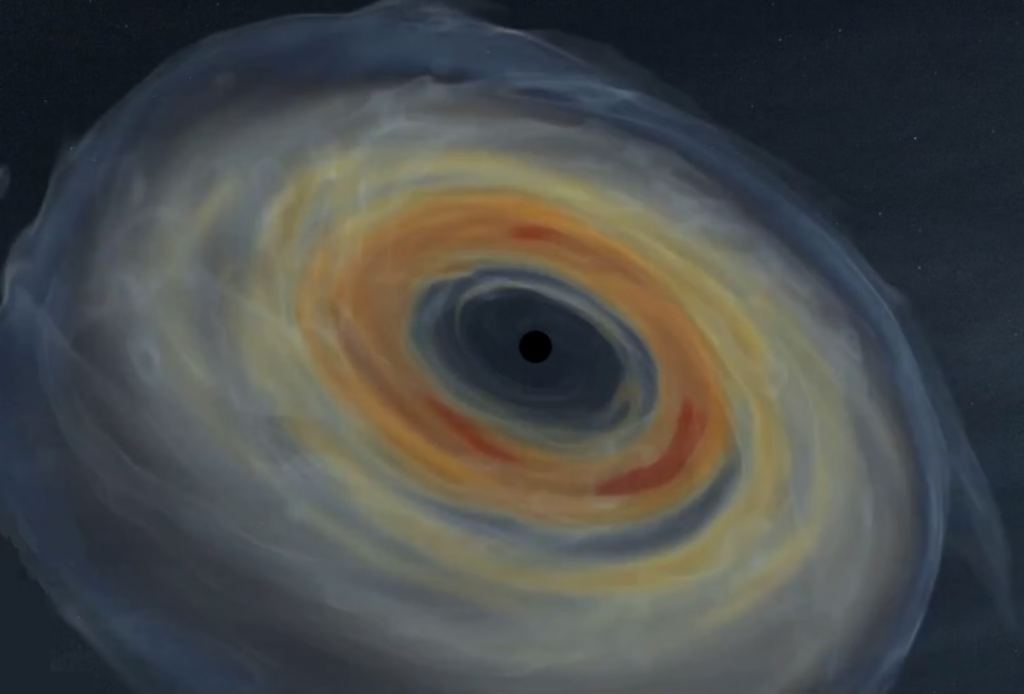Black holes often appear in science fiction movies, largely because elements of their existence are still a mystery. They have fascinating impacts on the surrounding region of space too with distortions in space and time high on the list. A team of astronomers have found a supermassive black hole with twin jets blasting out an incredible 23 million light years, the longest yet. To put this into context, if you lined up 140 Milky Way galaxies side by side, then that's the length of the jet!
The presence of mass in the Universe distorts space-time in its vicinity and the more massive, the greater the distortion. Black holes are regions where gravity is so strong that nothing, not even light can escape. They form when a massive star runs out of fuel in the core and collapses under its own gravity. The process creates a point of infinite density known as a singularity. Surrounding the singularity at a distance that depends on the properties of the progenitor star, is the event horizon. If matter of any sort, even a passing spacecraft, gets dragged in through the event horizon then it is never able to escape.
One of the properties of a black hole are powerful jets, high speed streams of particles ejected from the regions around a black hole. The material ejected never quite reaches the event horizon but instead has been ejected from within the accretion disk. The magnetic fields of a black hole and the rotation of the disks of heated gas and dust can launch jets from the polar regions. They can travel at speeds near the speed of light and can shoot across thousands and millions of kilometres of space. The exact mechanisms of the jets are still not well understood.
Astronomers observing with LOFAR (the Low Frequency Array) radio system spotted a jet so massive that its the equivalent of 140 Milky Way galaxies lined up side by side! For comparison the jet emanating from Centaurus A at the centre of our Galaxy spans about 10 Milky Way's! It's been nicknamed Porphyrion after the mythological giant in Greek culture. Dating back to a time when the universe was 6.3 billion years old, the jet has been found to be producing power equivalent to trillions of Suns!
The team that have studied the jet suggest that if giant jets like this were common in the early universe then they may well have been an influential force in the formation of galaxies. Modern jets seen in the nearby universe (and therefore at a later era in the evolution of the universe) seem to be much smaller by comparison. The conclusion is that perhaps the giant jets would have connected and fed energy and material to other nearby galaxies, driving their evolution.
The survey undertaken by LOFAR revealed more than 10,000 of these megajets. Previous studies revealed only a few hundred large jets suggesting they were more rare but this latest research shows otherwise. It was a real labour of love though as the team searched radio images by eye, used machine-learning tools to scan the images and even enlisted citizen scientists around the world to help. Their paper was published in the Astronomy and Astrophysical journal.
What of Porphyrion? The team followed up with observations with the Giant Metrewave Radio Telescope in Kitt Peak and the W. M. Keck Observatory in Hawaii to reveal the host galaxy 7.5 billion light years away.
 Universe Today
Universe Today


